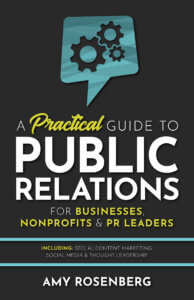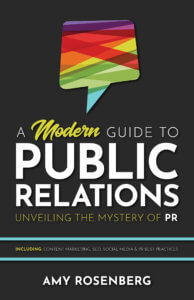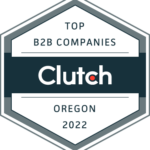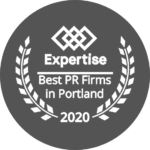![Zach Dundas: Portland Monthly Magazine [Podcast]](https://www.veracityagency.com/wp-content/uploads/PortlandMonthly720x540.jpg)
Zach Dundas: Portland Monthly Magazine [Podcast]
The Man Behind the Machine that is Portland Monthly
“We don’t expect PR people to read our minds,” Zach Dundas, Editor in Chief of Portland Monthly, assures us during the course of our interview on PR Talk. From his corner office overlooking the city, we covered his role as the head of editorial for Portland’s beloved monthly magazine, how he’s written two books, and his insight for PR people.
As Editor in Chief, Zach is responsible for setting the overarching direction of the magazine and ensuring that the editorial team follows suit. Yet many of the writers on Zach’s team also hold the Editor title, empowering them to make editor-like decisions within their reporting and writing functions. This frees Zach up to ponder how Portland Monthly can morph along with the city’s ever-changing scene and priorities—a task that becomes more challenging as Portland grows. Zach is quick to add that he still likes to get his hands dirty with frequent article writing and reporting.
“Deadlines are one of the secrets to creativity. Having to get something done is why a lot of things get done in the world,” Zach said. “What we do [at Portland Monthly] is driven by a deadline cycle. An under-rated factor in the creative industry is that there is a machine behind what people are creating.”
When to Pitch Portland Monthly
Speaking of deadlines, one of the hardest things to wrap my head around when doing long-lead PR is to think so far in advance. “If you want to see a story in print, it’s not out of the question to pitch something six months out,” Zach said. “But we can turn something around for the website in a day-ish.”
It’s always better to play it safe but new clients and projects don’t have these strict deadlines ingrained into their psyche like we PR people do. So if you can get in front of the team three to four months in advance of when the issue would publish, you’ll be OK.
If you’re really under the gun with a tight deadline you may be able to sneak something in after that time. Let’s take the June issue for example:
- It confusingly hits the stands in late May (a week or so before the month starts)
- It goes to the printer early May
- The details within the stories are conceived and written in April
- The drop-dead appears to be 6 weeks ahead but I’ve never been known for my computing skills. You do the math.
Keep in mind that the topical ideas for the entire year are mapped out 12 months or more ahead. See this blog post on Editorial Calendars for more insight.
How to Pitch Portland Monthly
Zach comforts us that Portland Monthly is always looking for stories. Pitching the right editor is part of the battle and you can’t uncover this by glancing over the masthead. You’ll need to pay attention to the magazine and web content to learn what each editor is covering. “The more closely you can tailor your pitch to each editor’s coverage focus, the better,” he says.
The most successful PR people have a “knack for telling the stories themselves and put thought into what they’re pulling together. The best pitches have elements of story and character,” Zach says.
This comment has me thinking about all the journalists we’ve interviewed on PR Talk who’ve been harping after us to shorten our pitches. “Concision is great but give us a sense of what the story is,” Zach says.
The point that PR people must customize, customize, customize has been driven home again. Not only are we tailoring our outreach efforts for each individual contact and outlet, we must also match our materials to how the medium delivers its news. A TV station that produces quick bites of news isn’t going to be able to digest a long pitch. Whereas a publication embarking on in-depth, long-form coverage might have the stamina for something meatier.
What to Pitch Portland Monthly
You’ll have to pick up a copy of the magazine, peruse the digital content and sign up for a newsletter to discover this for yourself! But if you are reading this in late Spring 2018, when this episode was released, Zach advises that it’s not too early to start talking about next fall and winter.
About the guest: Zach Dundas
Zach Dundas grew up in Montana, published ‘zines, played in bands, and made his start in journalism at the Missoula Independent. After working as an editor and reporter for Portland’s Willamette Week from 1999 to 2005, he wrote for Monocle, Maxim, Good Magazine, and others. His first book, The Renegade Sportsman, was published by Riverhead Books in 2007, followed by The Great Detective in 2015. He is now editor-in-chief of Portland Monthly and a correspondent for Monocle.
Connect and follow Zach on social media:
This episode of PR Talk is brought to you by PRSA Oregon
Throughout Oregon and Southwest Washington, PRSA provides members with networking, mentorship, skill building and professional development opportunities – whether you are a new professional fresh out of college or a skilled expert with 20 years in the industry. Check out PRSAoregon.org for more information on how membership can help you grow and connect.
PR Talk is sponsored by monday
In such a fast-paced, multi-faceted work environment, it can be tough to stay on top of everything. monday is the collaboration tool trusted by businesses of all kinds to help cut down the clutter and streamline productivity. Learn more at monday.com and signup for a free trial. You’ll see in no time why so many teams around the world are choosing monday for their project management needs.
PR Talk listeners can use the coupon code BetterExecute for a 15% discount.

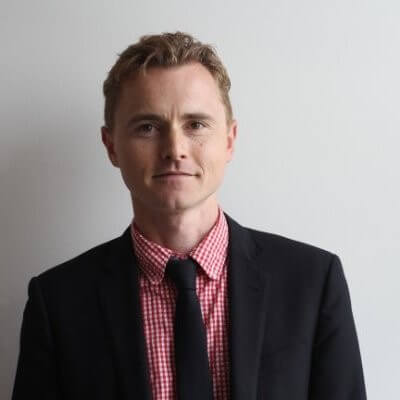
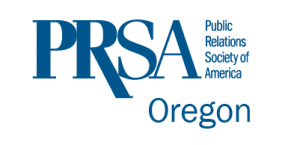

![Crisis PR & the PIO with Dave Thompson, ODOT [Podcast]](https://www.veracityagency.com/wp-content/uploads/Dave-Thompson-ODOT_800x600.jpg)

![Greg Retsinas: KGW Media Group [Podcast]](https://www.veracityagency.com/wp-content/uploads/Greg-Retsinas-PRTalk.jpg)
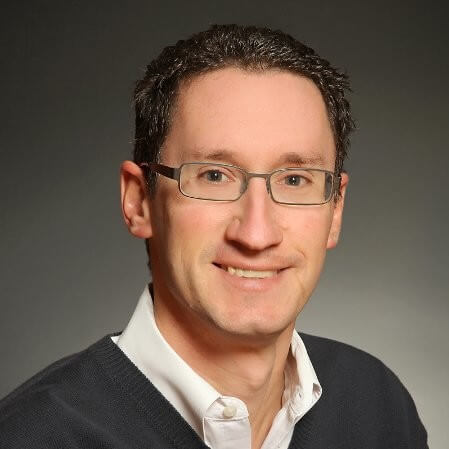
![Thought Leadership Positioning [Minicast]](https://www.veracityagency.com/wp-content/uploads/Expert-Positioning-800x600.png)
![Kent Lewis: Anvil Media [Podcast]](https://www.veracityagency.com/wp-content/uploads/Kent-PR-Talk-Podcast-800x600.jpg)

![Linkbuilding Through PR with Carolyn Shelby, Tribune Interactive [Podcast]](https://www.veracityagency.com/wp-content/uploads/CSHEL-Engage-2018-700-x-525.jpg)

